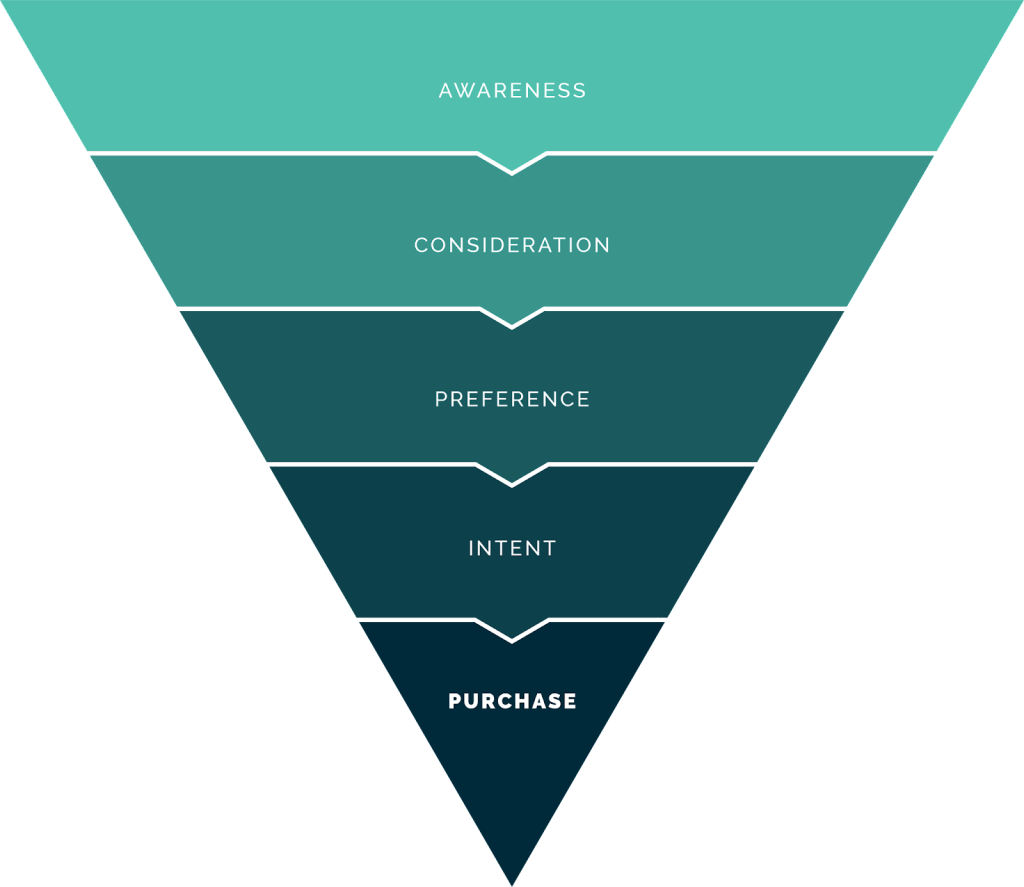
In my last article, I made what I hope is a compelling argument that we are entering a period of profound change in consumer behavior thanks to the emergence of GenZ and the degradation of third-party data.
NB: This is an article from gcommerce
I talked in broad strokes about what you might do to protect against these changes or, better yet, take advantage of them. Indeed we believe that this change presents a tremendous opportunity for smart hotels to gain market share and win new customers, in large part because many in our industry will be caught flat-footed.
Subscribe to our weekly newsletter and stay up to date
They’ll continue their marketing behaviors unchanged while wondering why they’re getting their butts kicked all of a sudden.
Before I get too prescriptive of specific strategies to win going forward, I want to review and then introduce a visual model you are all familiar with – the conversion funnel.
This visual is useful in orienting your mind to the new paradigm in marketing … because it’s flat-out wrong.
Over the past decade as marketers, we relied on math (clickthrough and conversion rates) and the ability to target new customers on the cheap to optimize the above funnel. We filled the top by buying inexpensive impressions from people looking to stay in a particular market. We enhanced our chances at conversion by resurfacing our brands during the consideration and preference stages with all manners of retargeting. And finally, we improved our chances of conversion in the intent and purchase phase by advertising for the name of our hotels or promoting time-sensitive offers. Sounds reasonable? That’s because it has been reasonable; and effective. But the model is incomplete and inefficient, and those hens are coming home to roost.
FLAW #1 The truth is, many marketers use the same message throughout the conversion funnel, regardless of the customer they are targeting. They rely on the “frequency” of their message instead of the quality. Most hotels simply advertise their most popular package(s) through most of their digital advertising.
FLAW #2 Equally important, this model assumes the purchase as the end of the funnel, when the truth is, it’s just the beginning. As marketers, every purchase, every conversion in this model is given relatively equal weight (ADR * Length of Stay). That’s just not how you run your business. You know who your best customers are; the ones who spend more money at your property or, better yet, stay more times every year. In this conversion funnel, we as marketers treat all conversions as the same, because they all are just a single purchase. We don’t identify and then try to find MORE of your best customers.
These flaws are only exacerbated by the trends I mentioned in the first article. Simple, transactional messaging that relies on crazy levels of third-party data targeting and high-frequency advertising are the tools of yesterday, not tomorrow.
We’ve reimagined the conversion funnel as follows:
Notice that the purchase is not the bottom of the funnel, it’s the second step. The true bottom of the funnel is lifetime advocacy, which should better align with a hotel’s most valuable guest. Marketing has a role to play in helping to attract and retain lifetime advocates, but it starts by understanding that our job is not to spend an outsized amount of our focus on the top of the funnel.







